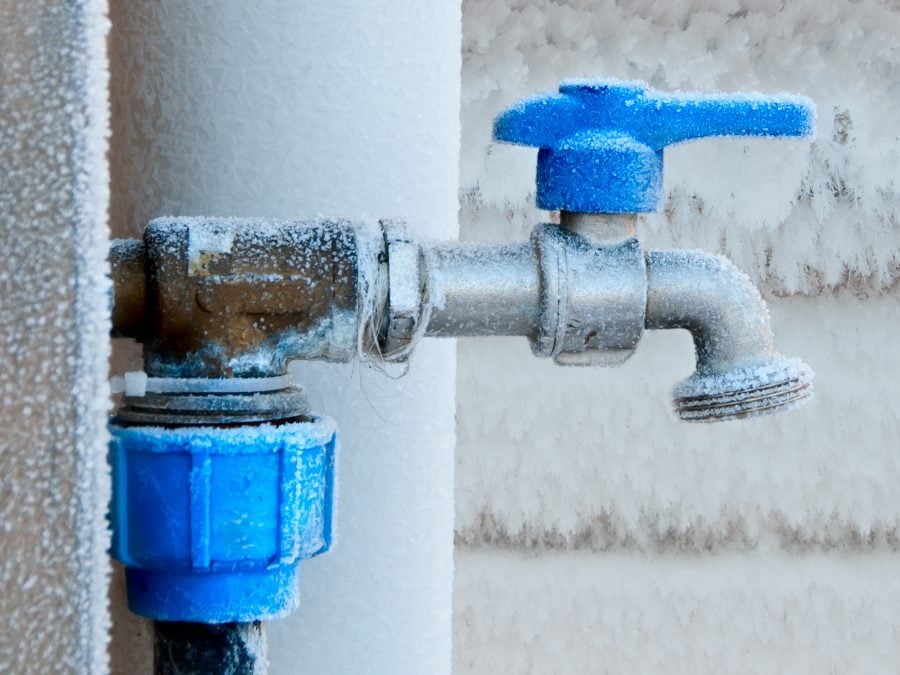Crucial Advice to Protect Against Frozen Plumbing in Cold Weather
Crucial Advice to Protect Against Frozen Plumbing in Cold Weather
Blog Article
How do you feel about Prevent Frozen Pipes ?

Winter can damage your plumbing, specifically by freezing pipes. Right here's exactly how to stop it from occurring and what to do if it does.
Introduction
As temperature levels decrease, the danger of frozen pipelines increases, potentially resulting in pricey repair services and water damage. Comprehending exactly how to avoid frozen pipelines is critical for house owners in chilly climates.
Recognizing Icy Pipes
What causes pipes to freeze?
Pipes freeze when subjected to temperature levels listed below 32 ° F (0 ° C) for prolonged periods. As water inside the pipelines freezes, it increases, taxing the pipe wall surfaces and potentially causing them to burst.
Risks and problems
Frozen pipes can bring about water supply disturbances, residential or commercial property damage, and pricey repair services. Burst pipelines can flooding homes and cause considerable architectural damage.
Indications of Frozen Pipes
Recognizing frozen pipelines early can prevent them from rupturing.
Exactly how to recognize frozen pipelines
Seek reduced water circulation from taps, unusual smells or sounds from pipelines, and noticeable frost on revealed pipelines.
Avoidance Tips
Shielding susceptible pipes
Cover pipelines in insulation sleeves or utilize warm tape to shield them from freezing temperature levels. Concentrate on pipelines in unheated or external locations of the home.
Home heating methods
Keep indoor spaces effectively warmed, specifically locations with plumbing. Open cabinet doors to allow warm air to flow around pipelines under sinks.
Securing Outdoor Pipes
Yard pipes and outside faucets
Disconnect and drain pipes yard hose pipes prior to wintertime. Install frost-proof faucets or cover outdoor taps with protected caps.
What to Do If Your Pipes Freeze
Immediate activities to take
If you think icy pipes, maintain faucets available to alleviate stress as the ice melts. Make use of a hairdryer or towels soaked in warm water to thaw pipelines slowly.
Long-Term Solutions
Architectural adjustments
Think about rerouting pipes far from exterior walls or unheated locations. Include extra insulation to attics, cellars, and crawl spaces.
Updating insulation
Invest in premium insulation for pipes, attics, and wall surfaces. Correct insulation aids keep consistent temperatures and decreases the danger of frozen pipes.
Conclusion
Stopping frozen pipes needs proactive steps and quick responses. By recognizing the causes, indicators, and preventive measures, property owners can safeguard their plumbing throughout winter.
6 Proven Ways to Prevent Frozen Pipes and Protect Your Home
Disconnect and Drain Garden Hoses
Before winter arrives, start by disconnecting your garden hoses and draining any remaining water. Close the shut-off valves that supply outdoor hose bibs and leave the outdoor faucet open to allow any residual water to drain. For extra protection, consider using faucet covers throughout the colder months. It’s also important to drain water from any sprinkler supply lines following the manufacturer’s directions.
Insulate Exposed Pipes
Insulating your pipes is an effective way to prevent freezing. Pipe insulation is readily available at home improvement stores and is relatively inexpensive. Pay close attention to pipes in unheated areas such as the attic, basement, crawl spaces, or garage. Apply foam insulation generously to create a buffer against the cold. You can also wrap your pipes in heat tape or thermostat-controlled heat cables for added warmth.
Seal Air Leaks
Inspect your home for any cracks or openings that could let in cold air. Seal any holes around the piping in interior or exterior walls, as well as the sill plates where your home rests on its foundation. Additionally, make sure to keep your garage door closed unless you’re entering or exiting. Leaving it open creates a significant air leak that can lead to frozen pipes.
Allow Warm Air Circulation
During cold snaps, it’s essential to allow warm air to circulate evenly throughout your home. Leave interior doors ajar to promote better airflow. Open kitchen and bathroom cabinets to help distribute heat consistently around the rooms. If you have small children or pets, be sure to remove any household chemicals or potentially harmful cleaners from open cabinets for safety.
Let Faucets Drip
A small trickle of water can make a big difference in preventing ice formation inside your pipes. When temperatures drop significantly, start a drip of water from all faucets served by exposed pipes. This continuous flow helps prevent the water from freezing. Additionally, running a few faucets slightly can relieve pressure inside the pipes, reducing the chances of a rupture if the water inside does freeze.
https://choateshvac.com/6-proven-ways-to-prevent-frozen-pipes-and-protect-your-home/

Do you really like reading about Winter Plumbing Precautions: Preventing Frozen Pipes? Post a comment directly below. We'd be pleased to find out your responses about this blog entry. We hope that you come back again in the near future. Do you know somebody else who is serious about the topic? Take a moment to share it. We truly appreciate reading our article about How To Avoid Freezing Pipes.
Schedule A Free Estimate Report this page